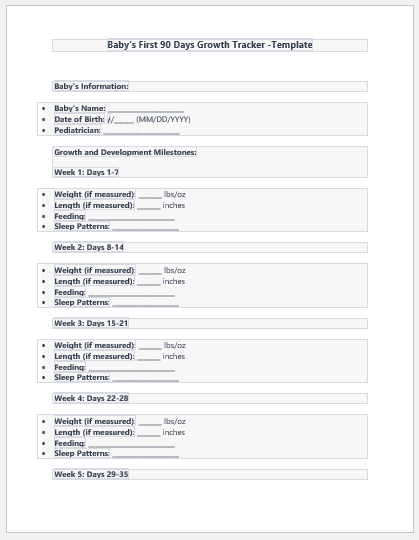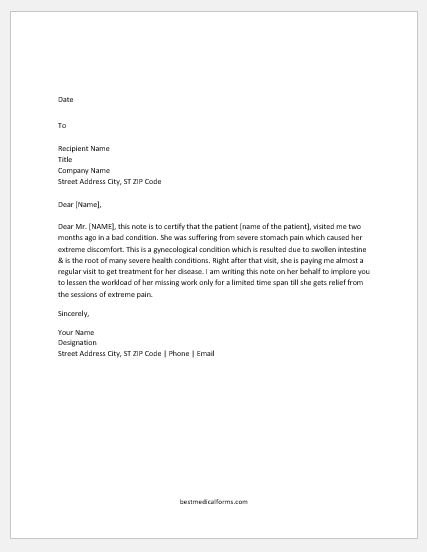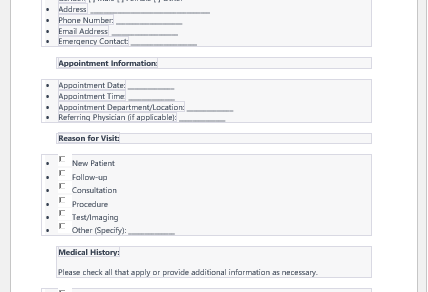The first few months of a baby’s life are critical, and parents and doctors are required to take better care of the baby during this time. It is very important to monitor the baby’s health in the first few weeks because some infants develop serious health problems during this time. If a baby is healthy, his growth will be like that of a normal baby. The growth can be checked by using a growth tracker.
What is a baby’s first 90-day growth tracker?
This tracker is a tool used by parents and doctors to monitor the baby’s health during the first 3 months of his life. During the first three months, the growth and development in the infant are very fast; therefore, caregivers have to be sure that it is normal. The tracker is used to track the height, weight, circumference of the head, and many other aspects that can be taken into account to ensure that the baby’s growth is up to par. The tracker is used because it keeps people well-informed about their infant’s health.

The Baby’s First 90 Days Growth Tracker is a comprehensive tool to monitor a newborn’s growth, feeding, diaper changes, developmental milestones, and vaccinations in an organized and easy-to-use format.
The Tracker File >> MS Excel (.xlsx)
How do I use a tracker to track an infant’s growth right after birth?
At the time of the child’s birth, doctors hand over a tracker to parents and instruct them to note various details in that tracker. This tracker can be in the form of software or paper. Once the tracker has completed the readings for one month, the caregiver can be asked to review it to determine if everything is fine. Here is how parents can use the tracker to achieve fruitful results:
Keep noting the weight of the baby every week
Since the infant’s growth is very fast in the first 90 days, parents are advised to take down the infant’s weight. When multiple readings are taken, parents and caregivers can see the variation in the weight, which will tell a lot about the health of the baby. If it is found that the infant’s weight is not changing at a normal pace, doctors can advise changing how an infant is fed.
Measure the length
A normal baby also shows growth in height. Therefore, parents or doctors should measure the height too. There is a specific standard that tells how much a normal infant is supposed to grow in the first 90 days. When parents compare their data with the standard value, they can easily determine if the baby’s body development is normal.
Keep an eye on the circumference of the head
It is important to determine if the newborn’s brain is also growing at a normal pace. Those who have normal brain growth show normal head development. The change in the circumference of the head can be compared with the required change to see the brain’s health. If there is any medical complication, it can be spotted at a very early stage, and doctors can suggest the best treatment options.
Track the newborn’s urine details
Sometimes, major health problems are spotted by the way a newborn passes urine and poop. So, parents have to record how often they change the diaper of the infant, the color, texture, and smell of the newborn’s stool, and some other details that can give a hint about the overall health of the baby because the doctor can see if the digestive system of the infant is normal or needs to be treated.
Record the sleep time
The growth of the child mainly depends on the quality of sleep in 24 hours. Therefore, parents are asked to record the sleep patterns of the baby. An infant usually spends most of his time sleeping. If there is some problem with his health or if his digestive system is not normal, there will be a disturbance in his sleep, and he will need treatment.
Looking at the newborn’s sleep patterns, the doctor can determine if there is anything to be concerned about and what the underlying cause behind it can be. Several things are resolved by the information on sleep patterns recorded in the tracker.

The Tracker File >> MS Word (.docx)
- Diabetes Travel Letter
- Persmission Letter for Eatables in Office due to Diabetes
- Diabetes Letter to Employer
- Trackers for Medical Facilities
- Nursing Documentation Templates
- Letters for being Unfit to Travel
- Mental Health Evaluation Forms
- Forms Used by Pediatricians
- Various Forms Related to Pregnancy Verification
- Common Forms Used by ENT Specialists
- Patient Registration Confirmation Messages
- Quotation Letter for Medical Services
- Mental Health Letter by Doctor
- Excuse Letter for Absence due to Medical Checkup
- Response Letter to Feedback on Improvement in Hospital

